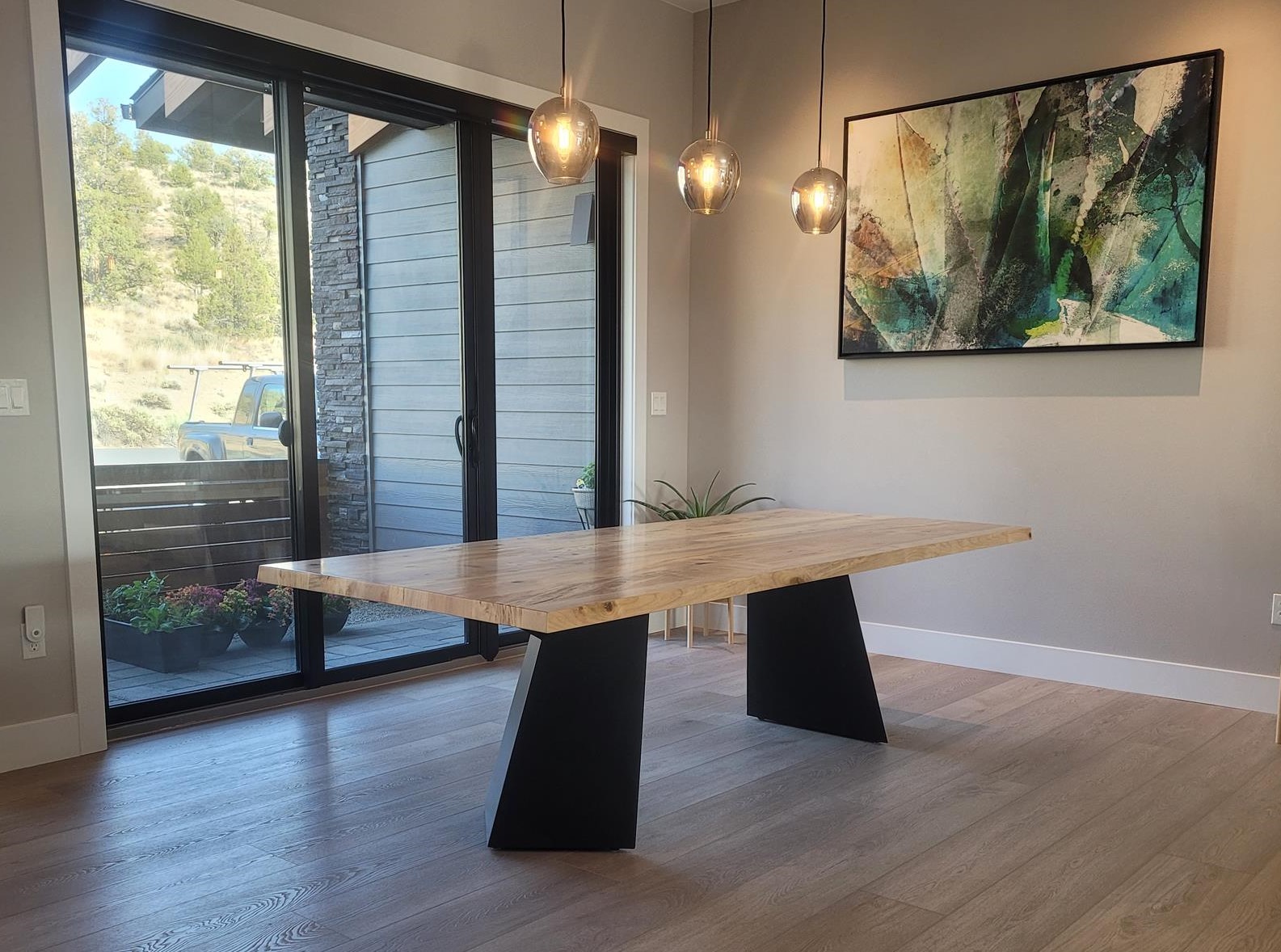An In-depth Check Out Table Leg Styles: Locating the Perfect Match
Selecting the appropriate eating table leg style is essential for both aesthetic allure and functional functionality. Traditional 4 legs supply classic beauty and stability, while the stand base offers increased legroom and a modern-day look. For those with bigger tables, trestle legs make sure durable assistance, whereas hairpin legs introduce a mid-century modern-day ambiance with their minimalist layout. The x-shaped legs blend contemporary design with boosted stability. Each of these alternatives brings unique benefits, making the choice greater than simply an issue of preference. Explore additionally to uncover which design perfectly complements your eating area and way of life.
Conventional 4 Legs
Amongst the different kinds of dining table leg styles, the conventional four-leg style remains a classic choice for several homes. 4 legs supply well balanced assistance, making sure the table continues to be secure and capable of bearing substantial weight (dining room table legs).
From an aesthetic viewpoint, the conventional four-leg layout can be quickly adjusted to various indoor styles. Whether crafted from wood, metal, or a mix of products, these legs can be intricately sculpted, streamlined and minimalistic, or anything in between. Their convenience permits them to match both rustic and contemporary setups effortlessly.
In addition, the simple framework of the four-leg design assists in ease of motion and placement within a room. Unlike even more complex bases, this style decreases blockages, offering ample legroom for restaurants. In summary, the traditional four-leg table leg design marries withstanding style with useful performance, making it a sharp option for those seeking both form and feature in their dining furnishings.
Pedestal Base
Usually celebrated for its elegant and space-efficient style, the stand base is a prominent choice to the standard four-leg configuration in table leg designs. This distinctive base commonly features a solitary main column supporting the table top, which can differ in form, from ornately sculpted timber to sleek, contemporary steel. One of the main benefits of the stand base is its capability to take full advantage of legroom and seating adaptability. Without corner legs, diners are managed greater flexibility of motion, making it an ideal option for round and oblong tables that advertise even more intimate and inclusive events.
Furthermore, the pedestal base's central support can deal with considerable weight, enabling for using larger table tops, such as marble or thick wood. This stamina combined with its visual adaptability makes the stand base a prominent option in both standard and modern interior settings. It can perfectly integrate with various design themes, from classic elegance to minimal modernity. The main column itself offers a canvas for complex designs and artistic expressions, adding a component of aesthetic rate of interest underneath the table. In recap, the stand base integrates functionality snappy, making it an improved and functional choice for diverse eating atmospheres.
Trestle Legs
Trestle legs offer a robust and ageless foundation for eating tables, characterized by their straight cross-bracing and durable assistance beam of lights. Stemming from medieval times, this layout has evolved yet maintained its vital framework, making it a perennial fave in both conventional and modern settings. The main trestle beam, commonly supported by 2 or more vertical posts, supplies outstanding stability, permitting larger table lengths without the demand for extra legs.
A substantial advantage of trestle leg tables is the adequate legroom they provide. Unlike tables with 4 edge legs, the absence of blockages at the table's sides provides unblocked space for chairs and diners, improving convenience and ease of access. This makes trestle tables ideal for fitting larger gatherings, whether in a dining-room or a reception hall.
The aesthetic adaptability of trestle legs is significant. Available in a variety of products such as timber, steel, and composite, they can be finished to match a variety of indoor styles. From rustic farmhouse to sleek contemporary layouts, trestle legs can be tailored to suit private preferences. Their long-lasting charm and practical benefits make trestle legs an engaging choice for those seeking both style and practicality in their table.
Barrette Legs

The appeal of hairpin legs depends on their simpleness and flexibility - dining room table legs. Readily available in a variety of materials, including steel and brass, they can be ended up in many colors to match different indoor styles. Whether coupled with a rustic wooden table top or a modern glass surface area, hairpin legs effortlessly blend performance with a touch of classic beauty
Sturdiness is an additional notable feature of hairpin legs. In spite of their fragile look, these legs are crafted to birth significant weight, ensuring the table stays steady and safe. In addition, they are reasonably very easy to mount, making them a popular choice for DIY enthusiasts and professional look at this site furniture makers alike.
X-Shaped Legs

Created from materials such as steel, wood, or a mix of both, X-shaped legs can be tailored to match different layout preferences. Steel legs commonly lend a smooth and commercial feeling, ideal why not try here for loft-style apartment or condos and modern dining areas. On the various other hand, wooden X-shaped legs provide a warmer, a lot more rustic allure, suitable for farmhouse or eclectic insides. The versatility in materials enables home owners to customize their dining tables to better fit their general layout scheme.
Additionally, the design behind X-shaped legs makes certain also weight circulation, minimizing the risk of wobbling and enhancing sturdiness. This makes them especially fit for bigger eating tables that call for added assistance. Fundamentally, X-shaped legs mix sensible design with modern-day visual appeals, making them a timeless choice for diverse dining settings.
Verdict
A thorough understanding of dining table leg designs exposes the distinct features and advantages of each design. Trestle legs make sure durable support for bigger tables, and barrette legs introduce a mid-century contemporary aesthetic.